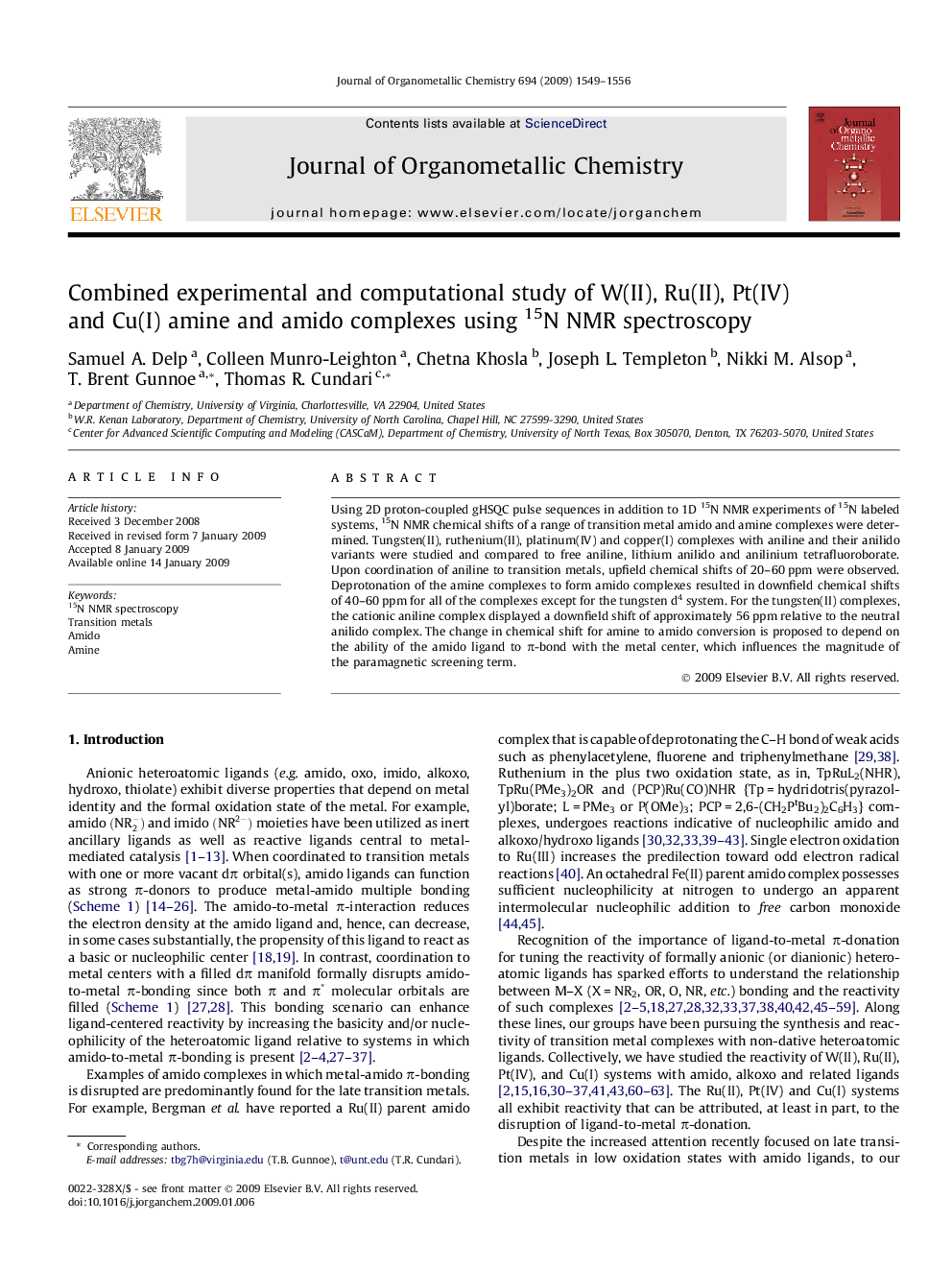| Article ID | Journal | Published Year | Pages | File Type |
|---|---|---|---|---|
| 1325278 | Journal of Organometallic Chemistry | 2009 | 8 Pages |
Using 2D proton-coupled gHSQC pulse sequences in addition to 1D 15N NMR experiments of 15N labeled systems, 15N NMR chemical shifts of a range of transition metal amido and amine complexes were determined. Tungsten(II), ruthenium(II), platinum(IV) and copper(I) complexes with aniline and their anilido variants were studied and compared to free aniline, lithium anilido and anilinium tetrafluoroborate. Upon coordination of aniline to transition metals, upfield chemical shifts of 20–60 ppm were observed. Deprotonation of the amine complexes to form amido complexes resulted in downfield chemical shifts of 40–60 ppm for all of the complexes except for the tungsten d4 system. For the tungsten(II) complexes, the cationic aniline complex displayed a downfield shift of approximately 56 ppm relative to the neutral anilido complex. The change in chemical shift for amine to amido conversion is proposed to depend on the ability of the amido ligand to π-bond with the metal center, which influences the magnitude of the paramagnetic screening term.
Graphical abstract15N NMR data of several transition metal (Ru, Pt, W and Cu) amine and amido complexes were acquired using proton coupled 2D gHSQC pulse sequences or by 1D analyses with isotopically enriched samples. The coordination of aniline to all metal centers results in upfield chemical shifts of 20–60 ppm relative to free aniline. For the Ru(II) and Pt(IV) complexes, the conversion of amine ligands to amido via deprotonation results in downfield chemical shifts in the 15N NMR spectra of 40–60 ppm. For the W(II) complexes, the conversion of amine to amido results in an upfield chemical shift of approximately 56 ppm. Computational studies and consideration of amido-metal π-bonding have been used to understand the chemical shift data.Figure optionsDownload full-size imageDownload as PowerPoint slide
